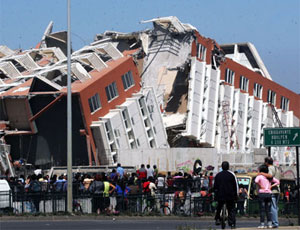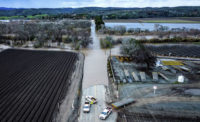The most powerful earthquake to strike Chile in a generation may have left hundreds dead and the South American nation’s infrastructure in tatters, yet the fact the destruction was not far worse is being cited as a testament to Chile’s application of improved building codes and decades of efforts to prepare.
“The big numbers tell us that we are doing our homework,” said Alfonso Bastias, a civil engineering professor at Pontifical Catholic University of Chile in Santiago.
The magnitude-8.8 quake hit early in the morning on Feb. 27, offshore from the Maule Region. It is the strongest quake to rock Chile since a magnitude-9.5 quake in 1960—the most powerful seismic event ever measured.
According to the Chilean government, on March 2 the death toll from the new quake stood at 723. More than 500,000 homes have been seriously damaged or destroyed, and more than 2 million people have been directly affected. Transportation and communications systems were brought to a complete standstill, and more than 1.5 million people were without power in the quake’s immediate aftermath.
A great deal of the damage reported so far seems to have been to older structures, says Bastias. More modern buildings that collapsed will be examined to see if they were built properly to code.
For decades, Chile has bolstered both its construction standards and emergency response plans to handle major seismic events. The country’s building codes are considered on par with regions in the U.S.—such as California and the Pacific Northwest—that are similarly susceptible to earthquakes.
Taller buildings, for example, feature frame construction designs to enhance stability. Buildings taller than eight stories feature a stiff, continuous system of structural walls that help control drift and dampen the worst effects of a temblor.
The Chile earthquake provides another opportunity to study the effectiveness of seismic-code details and damage-mitigation efforts. The Oakland, Calif.-based Earthquake Engineering Research Institute has mobilized a multidisciplinary team to head to Chile to begin examinations. “This is especially fertile ground for researchers to find out how effective our own measures are [in] handling these kinds of events,” said EERI Executive Director Jay Berger.
Despite the upbeat assessments, Chile faces a massive rebuilding job. Insured losses have been pegged at more than $2 billion, with total economic losses expected to exceed $15 billion, according to catastrophe-modeling firm AIR Worldwide.
Santiago International Airport was closed because of damage to its terminal building. Normal services are not expected to resume for at least a week. The country’s main port of Valparaiso also was hard hit, but officials with port operator Empresa Portuaria de Valparaiso say the facility “resisted the seismic event reasonably well.”
Several highways leading into the most affected areas were rendered impassible due to road and bridge damage, although many of the damaged structures, such as the highway bridge over the Bío-Bío River in Concepción that almost completely collapsed, were built before seismic standards were put in place, said Luis Alarcón, chairman of the school of engineering at Pontifical Catholic University of Chile.
The performance of Chile’s seismic construction codes and practices contrasts starkly with the damage...




Post a comment to this article
Report Abusive Comment